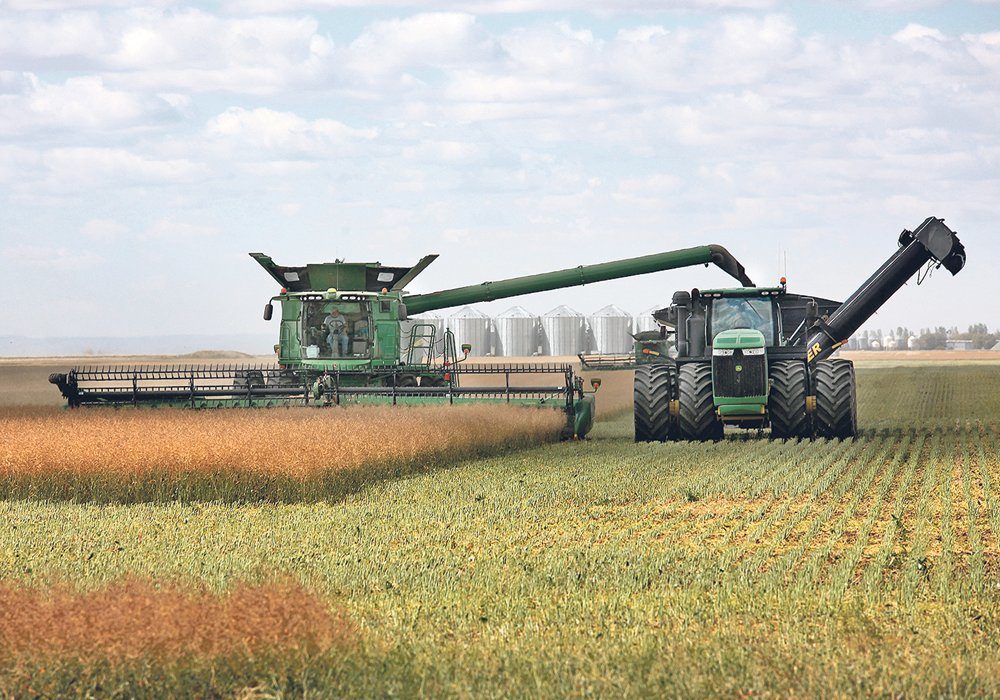Tools available to boost yields: canola council

Agronomic research in combine settings, seed survival and fertilizer management could help meet new crusher demand
Canada’s canola growers have the knowledge, tools and wherewithal to add another six bushels per acre to the national average yield by 2024, says an industry executive.
That will get the industry two-thirds of the way to where it needs to be to fully supply all of the new crush facilities that are scheduled to be up and running by then.
Curtis Rempel, vice-president of crop production and innovation with the Canola Council of Canada, said there is new agronomy and crop management research that has recently been disseminated to farmers that should have a big impact on yields over the next two or three years.
“We are plowing new ground here,” he said.
One example is the research on how farmers can adjust their combine settings as humidity levels change throughout the day.
By regularly checking their loss pans and tweaking their settings, farmers can put an extra two bushels per acre in their bins and reduce volunteer weeds for years to come.
There is also new research on how to boost seed survival rates to 75 percent from 50 percent.
“We’ve known for a while that we need to do it,” said Rempel.
“I think how to do it, we’re just sort of getting into stride right now.”
Improved fertilizer management is the other key but it has to be done without increasing nitrous oxide emissions.
To that end, the industry is developing nitrogen response curves for the latest hybrids on the market rather than relying on outdated curves dating back to the open pollinated canola of the 1990s.
And there are some new traits that will be part of the solution.
“Pod shatter is really, really coming into the forefront right now,” said Rempel.
All of those advancements are giving him the optimism that average yields could increase by six bu. per acre by 2024 when the new crush facilities being built by Viterra, Cargill and Richardson are slated to open in Saskatchewan.
That will fall short of the additional nine bu. per acre needed to produce the extra 4.6 million tonnes per year of canola that the plants are expected to consume when fully operational.
The average yield needs to increase to 50 bu. per acre, up from the five-year average of 41.
There is no doubt that modern canola genetics are capable of producing an average crop of 50-plus bu. per acre if the conditions are right and farmers adhere to new research findings, said Rempel.
One of the keys will be boosting substandard yields in the brown and dark brown soil zones. That will be an area of focus for all the new agronomy work.
The increase will not come from additional acres. Farmers are nearly maxed out at 21.7 million acres per year, which is almost exactly one-third of the arable acres in the prairie region.
Rempel said there might be 300,000 acres in southern Saskatchewan that could be shifted into canola at the expense of crops like mustard. But that’s a drop in the bucket.
And it won’t come from tightening rotations. Most farmers plant canola every three years because it maximizes yields and profits.
“They have their economics figured out. It’s working well for them and they’re going to stick with it,” he said.
There are some growers who plant the crop every two years in rotation with a cereal grain because there are no viable third crop options in their region of the Prairies. They are not about to start planting back-to-back canola.
So the increase will have to come from improved yields.
There has been precious little yield increase over the past five years but that is largely due to poor weather conditions, said Rempel.
One year there was a fall snowfall that delayed harvest until spring.
Another year there was a significant amount of re-seeding due to too much moisture in some regions and not nearly enough in others.
There have been heat waves during flowering that melted away yields.
And last year there was an unprecedented amount of days with winds over 40 km-h.
The new pod shatter traits were up to the task but gale-force winds blew entire pods off of the plants.
This year’s challenge is going to be the dismal moisture conditions heading into seeding.
Rempel thinks the grain companies that are building new crush facilities are encouraged that average yields hovered in that 40 to 42 bu. per acre range over the past five years despite the myriad of weather challenges.
“At least we’re not dropping back down to 22 when we had really bad years,” he said.

